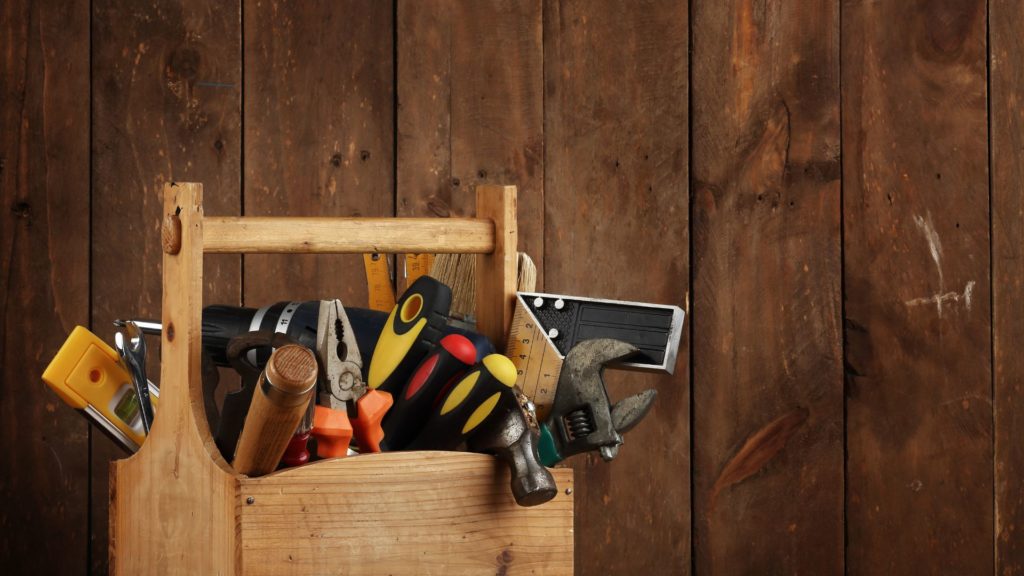If you own or rent a home, you know that there are always things that need fixing, adjusting, or improving around the house. Whether it’s hanging a picture frame, tightening a loose faucet, or building a bookshelf, you need the right tools for the job. But what are the must-have tools that every handyman should have in their toolbox?
In this blog post, we will share with you a list of 10 essential tools that will help you tackle any home project or repair with confidence and ease. These are the tools that we use time and again for various tasks and that we recommend to anyone who wants to be handy around the house.
10 Must-Have Tools for Homeowners
1. Hammer: A hammer is one of the most basic and versatile tools you can have. You can use it to drive nails, pull nails, pry things apart, or even break things if needed. Choose a good quality hammer that has a comfortable grip and a proper weight for your strength and preference. A 16-ounce claw hammer is a good all-around choice for most homeowners.
2. Screwdriver: A screwdriver is another essential tool that you will use for many purposes, such as installing or removing screws, opening cans or lids, or prying things open. You should have a set of screwdrivers with different sizes and types of tips, such as slotted, Phillips, star-shaped, and square. You can also get a multi-bit screwdriver that has interchangeable tips for convenience and space-saving.
3. Pliers: Pliers are useful for gripping, twisting, bending, or cutting various materials, such as wires, pipes, nuts, bolts, or nails. You should have at least three types of pliers in your toolbox: needle-nose pliers for reaching into tight spaces and working with small objects; slip-joint pliers for adjusting the jaw width and gripping different sizes of objects; and locking pliers for clamping onto something and holding it securely.
4. Wrench: A wrench is a tool that helps you tighten or loosen nuts and bolts of various sizes and shapes. You should have at least two types of wrenches in your toolbox: an adjustable wrench that can fit different sizes of nuts and bolts by adjusting the jaw width; and a combination wrench set that has fixed sizes of open-end and box-end wrenches for specific sizes of nuts and bolts.
5. Tape measure: A tape measure is a tool that helps you measure lengths, widths, heights, distances, or angles of various objects or spaces. You should have at least one 25-foot tape measure that has both standard and metric units and a locking mechanism for holding the tape in place. You can also get a smaller tape measure for portability and convenience.
6. Level: A level is a tool that helps you check if something is horizontal or vertical, such as a shelf, a picture frame, or a wall. You should have at least one 24-inch level that has both horizontal and vertical bubble vials for accuracy and ease of use. You can also get a smaller level for working in tight spaces or a laser level for projecting a straight line across a surface.
7. Flashlight: A flashlight is a tool that helps you see in dark or dim areas, such as under the sink, behind the furniture, or in the basement. You should have at least one flashlight that has a bright LED bulb, a durable casing, and a long battery life. You can also get a headlamp for hands-free illumination or a rechargeable flashlight for convenience and eco-friendliness.
8. Utility knife: A utility knife is a tool that helps you cut various materials, such as cardboard, plastic, rubber, or leather. You should have at least one utility knife that has a sharp blade, a comfortable handle, and a safety lock mechanism. You can also get a retractable utility knife that allows you to adjust the blade length or a folding utility knife that protects the blade when not in use.
9. Nails and screws: Nails and screws are fasteners that help you join or attach various materials together, such as wood, metal, or drywall. You should have an assortment of nails and screws of different sizes and types for different purposes and projects. You can also get anchors and washers for extra strength and stability when working with hollow walls or heavy objects.
10. Drill: A drill is a power tool that helps you make holes in various materials using different types of drill bits. You should have at least one cordless drill that has a rechargeable battery, a variable speed trigger, and a keyless chuck for easy bit changes. You should also have a set of drill bits that includes various sizes and types, such as twist, spade, masonry, and hole saw bits.
With these 10 essential tools in your toolbox, you will be ready to handle any home project or repair with confidence and ease. Of course, there are many other tools that you may need or want depending on your specific needs and preferences, but these are the core tools that we recommend to anyone who wants to be handy around the house. Remember to always use your tools safely, follow the instructions, and wear protective gear when necessary.

